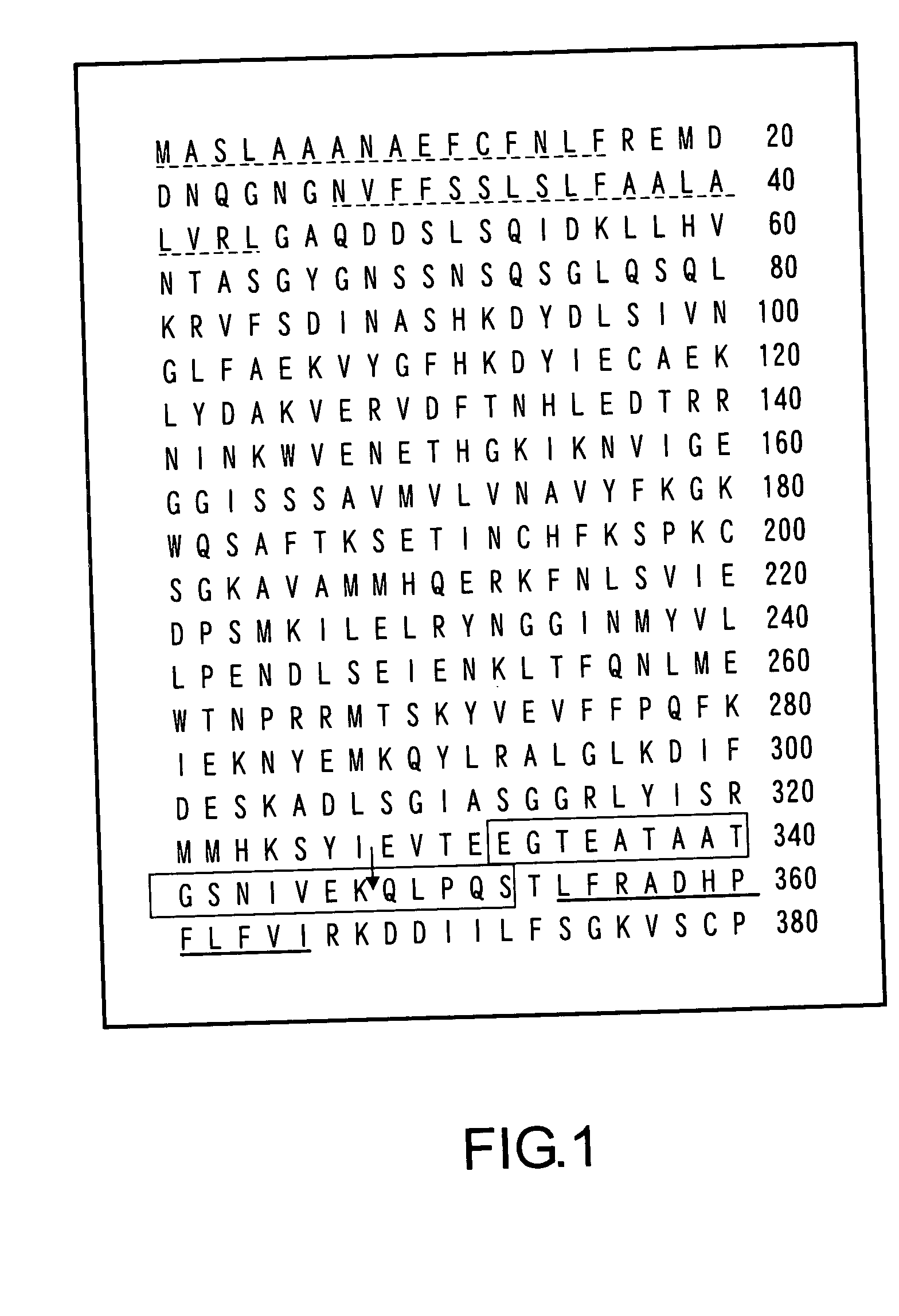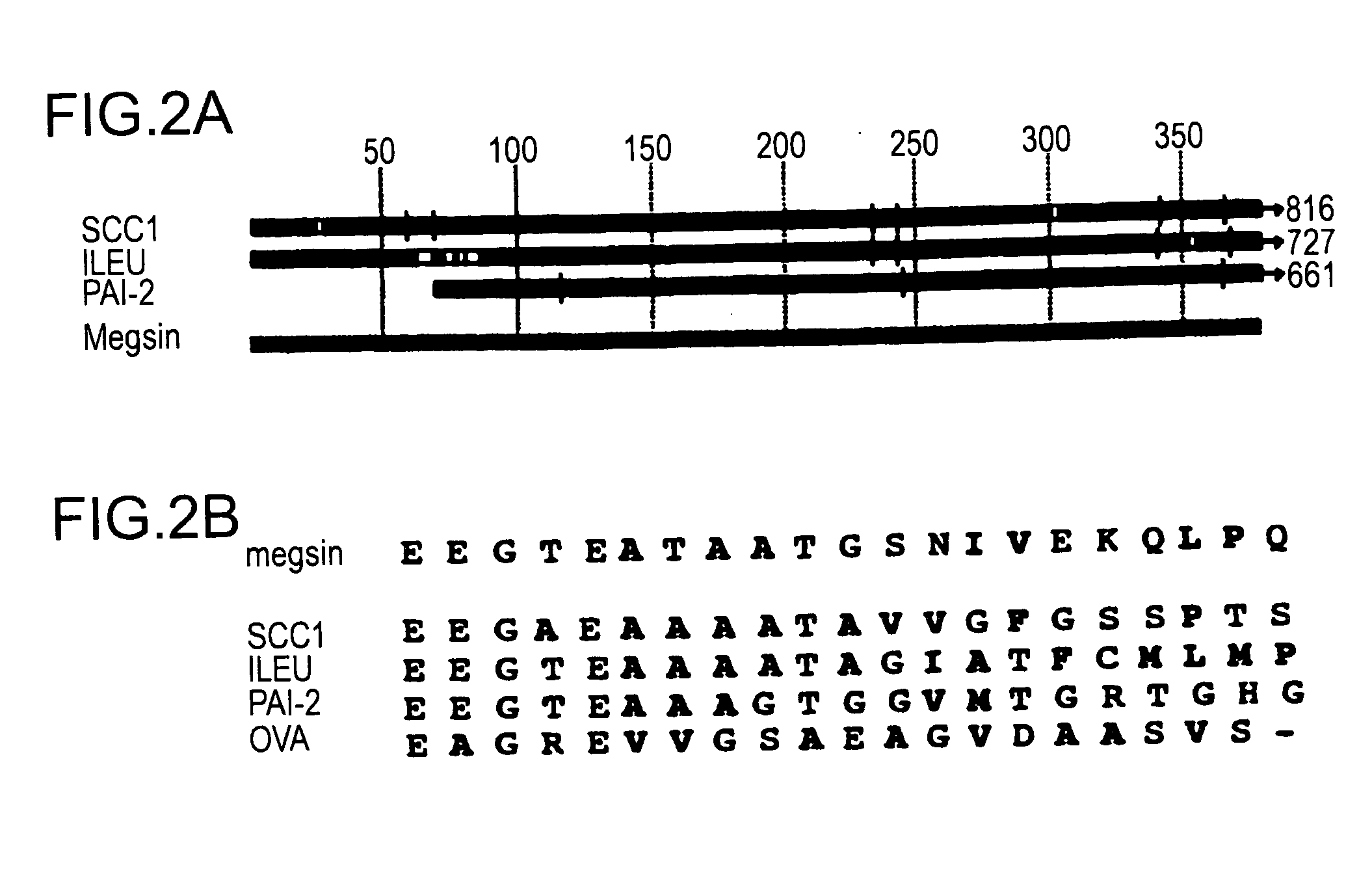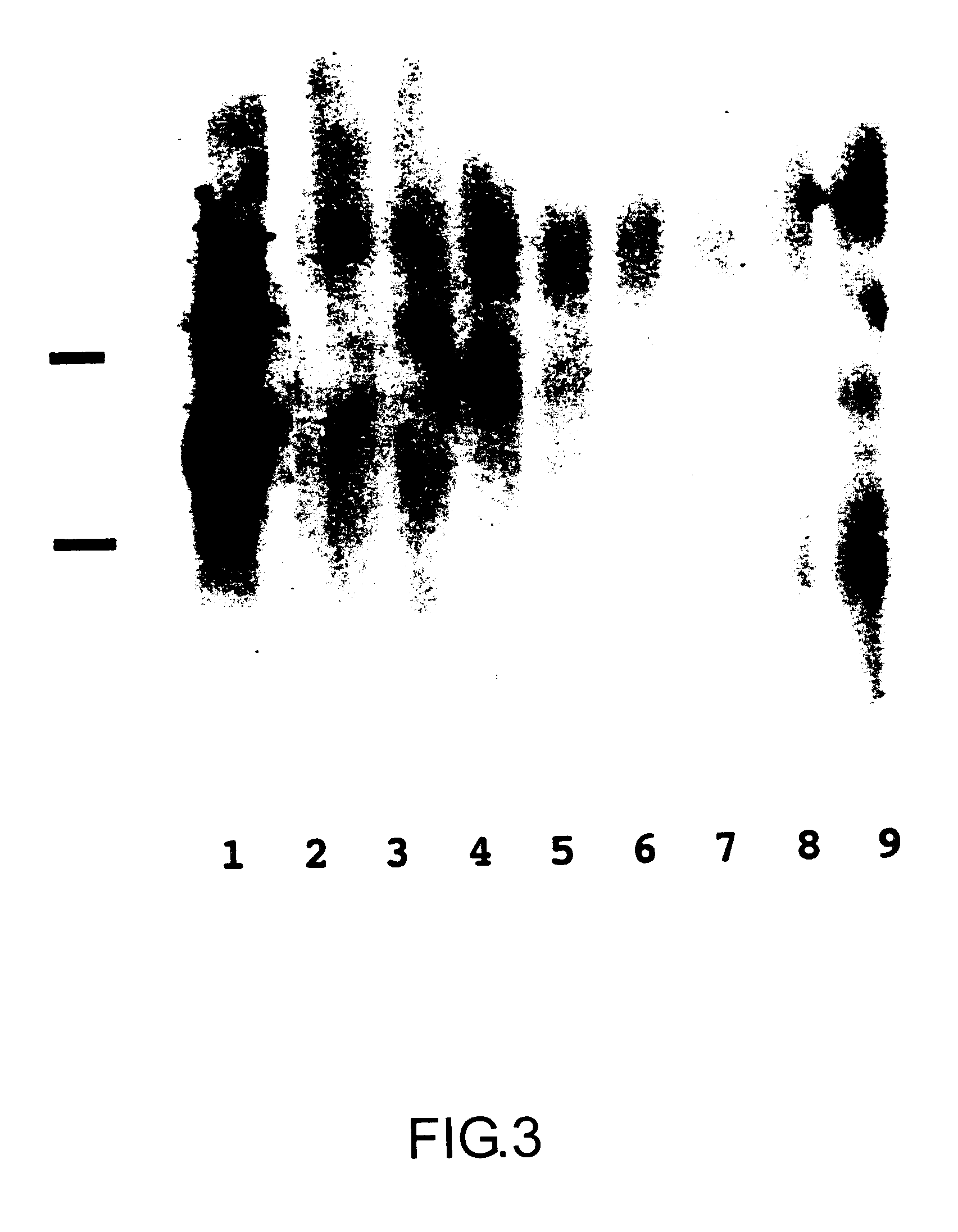MEGSIN protein
a technology of megsin and protein, which is applied in the field of gene isolation of renal cells, can solve the problems of difficult determination of the nucleotide sequence of the 3′ end by the chain termination method, and cannot be used to obtain typical sequences of genes
- Summary
- Abstract
- Description
- Claims
- Application Information
AI Technical Summary
Benefits of technology
Problems solved by technology
Method used
Image
Examples
example 1
Primary Culture of Human Mesangial Cells
[0083] Human glomerular renal mesangial cells were isolated from the normal human kidney excised from a 58 year-old male. Renal cortex was separated under the sterilized condition, minced, and passed through several sieves. Pore diameters of the used sieves were decreased stepwise, and the trapped glomerulus by the sieve at the pore diameter of 75 to 200 mm was washed and incubated with 100 μg / ml collagenase (Washington Biochemical) at 37° C. for 20 min. After washing, the glomerulus was resuspended in medium 199 (Gibco BRL, Gaithersburg, Md.) containing 25 mM Hepes, 10% Nu-serum (Collaborative Biomedical Products, Bedford, Mass.), and antibiotics (100 mg / ml of penicillin, streptomycin, and Fungizone), and incubated in the 5% CO2 incubator. At the third passage, mesangial cells were identified based on a series of criteria such as typical morphological characteristics, resistance to trypsin, puromycin, and D-valine, positiveness against immun...
example 2
Isolation of mRNA from Human Cultured Mesangial Cells
[0084] At the sixth passage, total RNA was isolated from human mesangial cells using guanidine isothiocyanate (GTC) method. The confluent culture of the mesangial cells in the medium containing serum of the cells of Example 1 was washed with phosphate buffer saline (PBS), and dissolved in 5.5 mM GTC solution. DNA was removed by passing through an 18-gauge needle. Nuclei and other cell debris were precipitated by centrifugation at 5,000×g for 90 sec. Supernatant was carefully loaded on the layer of cesium trifluoroacetate (CSTFA) and centrifuged at 125,000×g at 15° C. for 24 hours. RNA pellet was dissolved in TE buffer. Poly (A)+ RNA was isolated using oligo dT cellulose column (Pharmacia).
example 3
Construction of 3′-Directed cDNA Library
[0085] cDNA was synthesized using the vector primer based on pUC19 (Norrander J. et al., Gene, 26, 101-106, 1983) with poly (A)+ RNA as a template. This vector primer DNA comprised the HincII end and the PstI end with a T tale, and dam-methylated at the MboI site (GATC). After synthesizing the second strand, the cDNA sequence and the single BamHI site in LacZ gene of the vector were digested with MboI and BamHI, respectively, and circularizion and ligation were conducted at the low DNA concentration. A portion of the ligation mixture was transformed to E. coli. The obtained transformants were randomly selected and individually dissolved by simply heating. The inserted sequence of cDNA was amplified by the paired PCR using primers (5′-TGTAAAACGACGGCCAGT-3′ / SEQ ID NO: 7 and 5′-ACCATGATTACGCCAAGCTTG-3′ / SEQ ID NO: 8) flanking the pUC19 cloning site. The obtained short double stranded DNA was used for the cycle sequence determination reaction and ...
PUM
| Property | Measurement | Unit |
|---|---|---|
| Incubation time | aaaaa | aaaaa |
| Incubation time | aaaaa | aaaaa |
| pore diameter | aaaaa | aaaaa |
Abstract
Description
Claims
Application Information
 Login to View More
Login to View More - R&D
- Intellectual Property
- Life Sciences
- Materials
- Tech Scout
- Unparalleled Data Quality
- Higher Quality Content
- 60% Fewer Hallucinations
Browse by: Latest US Patents, China's latest patents, Technical Efficacy Thesaurus, Application Domain, Technology Topic, Popular Technical Reports.
© 2025 PatSnap. All rights reserved.Legal|Privacy policy|Modern Slavery Act Transparency Statement|Sitemap|About US| Contact US: help@patsnap.com



